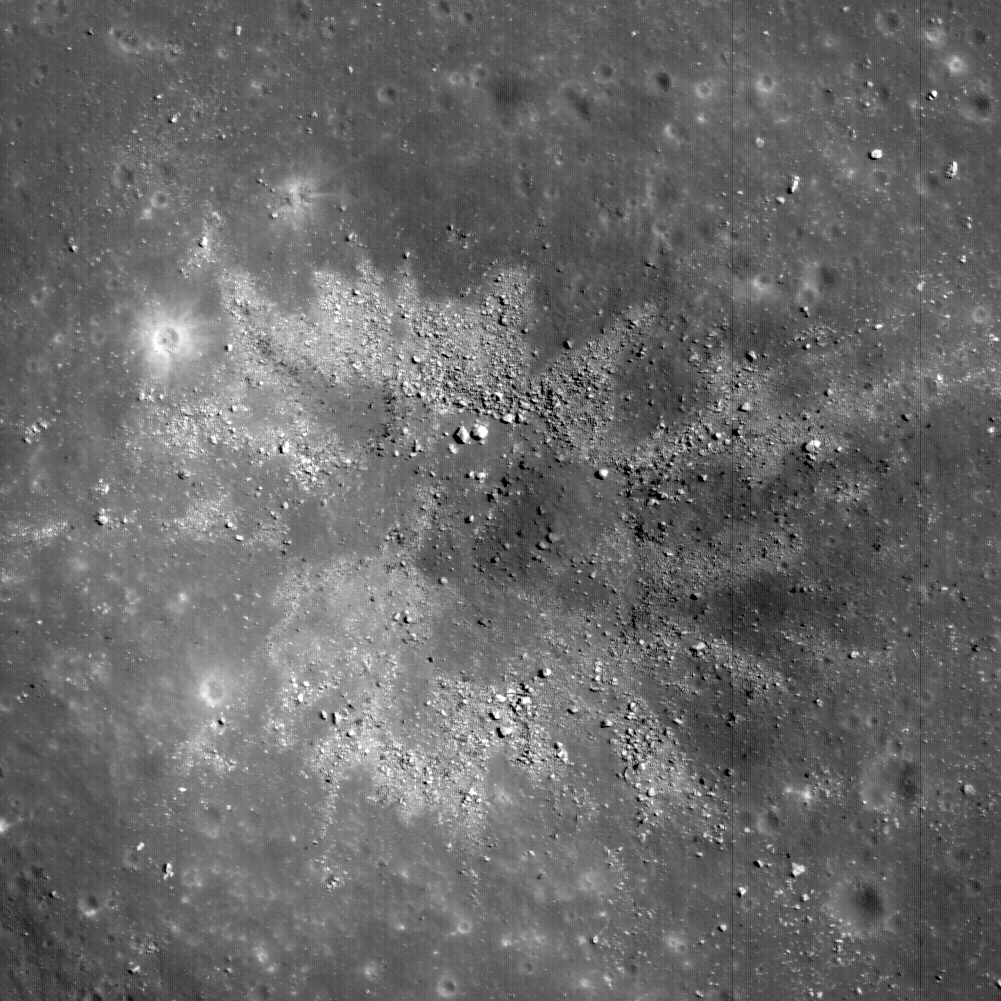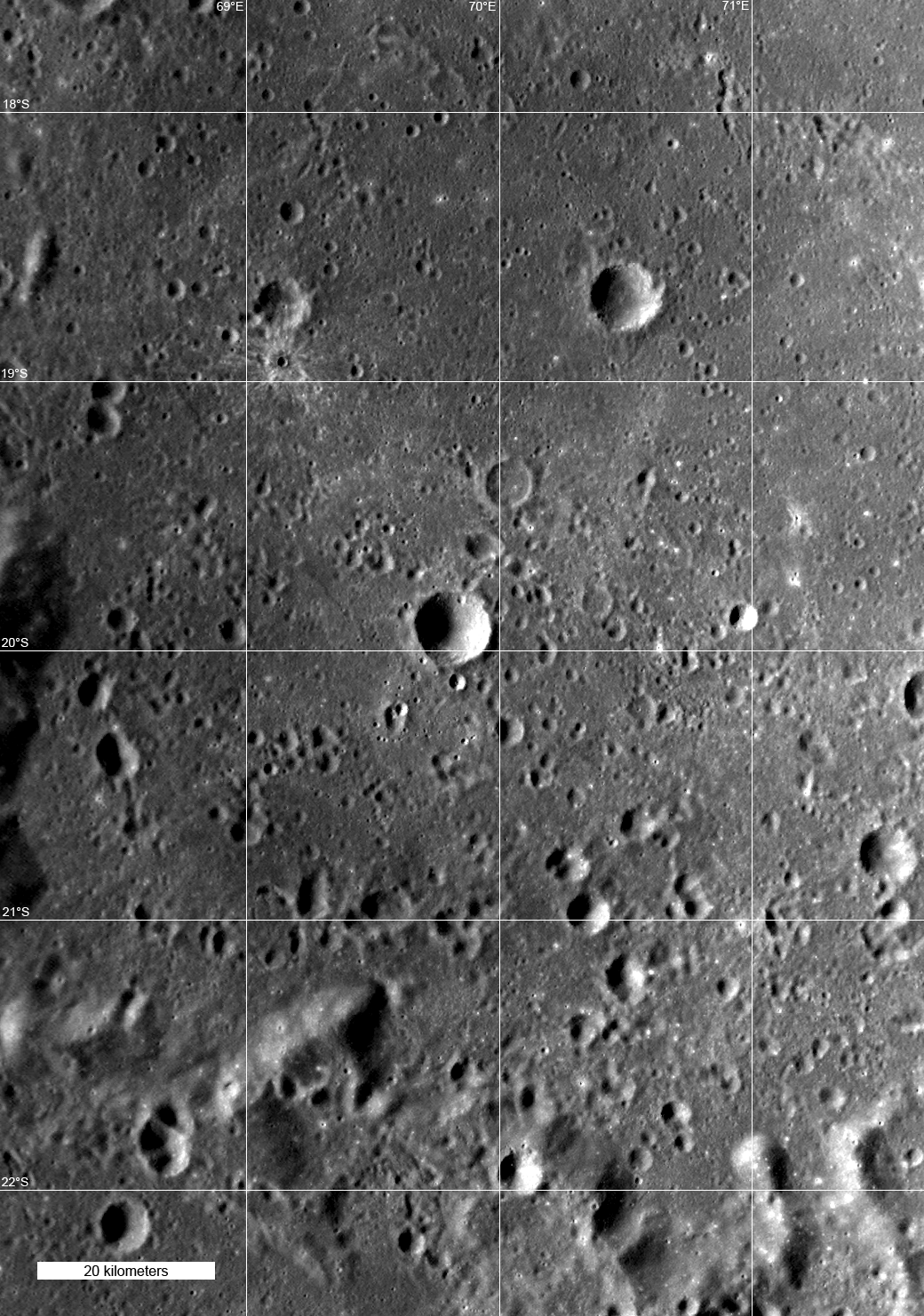
The Balmer Basin Constellation Region of Interest lies within the Balmer Crater, centered at about 20°S latitude and 70°E longitude. Balmer is an old, highly degraded crater some 110 km across and is part of a larger basin structure called the Balmer-Kapteyn Basin, which has 225 km and 450 km diameter rings. Scientifically, this area is interesting because it contains a type of 'light plains deposit' that appears to lie on top of an ancient basaltic surface. Building on earlier studies of these deposits, Hawke et al. [2005] concluded that the deposits formed by the deposition of material ejected by later-formed impact basins that mixed with regolith that had developed on the old Balmer volcanic lava flows. This conclusion was based on the occurrence of numerous 'dark haloed' impact craters, such as one shown as an LROC featured image on August 31, 2009.
Perhaps dark-haloed craters are not the only types that reflect this dichotomy. Two-toned deposits are evident in the crater shown in today's featured image. This distinctive two-toned appearance is seen in some other similar-size craters in Balmer, but is not common. The regolith here is probably fairly thick, perhaps 50 to 100 m in many places. The regolith is a zone of mixing between the light-toned basin ejecta deposits and the underlying basalts. This crater appears to have excavated both types of materials.
Buried volcanic deposits such as the ones in the Balmer region have been called 'cryptomare' after Head and Wilson [1992], who defined geologic features such as this as "covered or hidden mare deposits that are obscured from view by the emplacement of subsequent deposits of higher albedo." [see also the November 16, 2009 featured image release]
Compositional information gleaned from orbital remote sensing supports the interpretation that the light plains are underlain by mare basalt, particularly by the presence of higher FeO and MgO contents than are typical of the surrounding highlands deposits.
Narrow-angle Camera (NAC) images show the detail of the crater ejecta from bright relatively young craters over a range of sizes that serve as natural drill holes into the light plains deposits. Explorers, whether human or robotic, visiting the Balmer region would determine the composition of the regolith excavated by these craters to test for a mixture of highlands and mare rock components. The age and composition of the basaltic components would reveal new insights into the volcanic history of the Moon.
Explore the Balmer Constellation region of interest for yourself!
Hawke, B. R., J. J. Gillis, T. A. Giguere, D. T. Blewett, D. J. Lawrence, P. G. Lucey, G. A. Smith, P. D. Supdis, G. J. Taylor (2005) Remote sensing and geologic studies of the Balmer-Kapteyn region of the Moon, J. Geophys. Res., 110. doi:10.1029/2004JE00283.
Head, J. W. and L. Wilson (1992) Lunar mare volcanism: Stratigraphy, eruption conditions, and the evolution of secondary crusts, Geochim. Cosmochim. Acta, 56, 2155-2175.
Published by Sandra Wiseman on 26 March 2010
